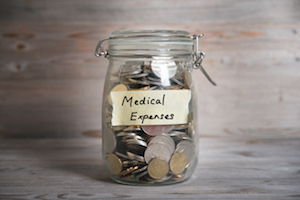 While the pandemic has led to a fluctuation in how HSA account holders have used their funds, a new study finds that rising health care costs and delayed service may make it difficult to save for future costs.
While the pandemic has led to a fluctuation in how HSA account holders have used their funds, a new study finds that rising health care costs and delayed service may make it difficult to save for future costs.
Lively’s third annual HSA Spend Report shows that the COVID-19 pandemic initially halted health care spending for preventative and elective procedures, causing HSA spending to go down. But as stay-at-home orders were lifted last summer, health care spending picked up, but at a slower and more unpredictable pace.
For example, Lively found that doctors visit and services (-3%), hospital (-9%), lab work (-15%), and dental spending (-9%) all decreased in 2020, but there were also large spending increases for prescriptions (+32%) and chiropractic care (+20%).
When expected medical, dental, and vision expenses are combined, more than 71% of all HSA expenses were used for yearly expenses—and that level jumps to 84% when adding prescription drug spending. The firm expects this distribution to climb even further, as yearly service-based medical costs continue to increase, which will put pressure on the ability to save in an HSA.
Insurers note that COVID-19 will put both upward and downward pressure on health costs in 2021. The most common factors that are expected to increase costs are the continued cost of COVID-19 testing, the potential for widespread vaccination and the rebounding of medical services delayed from 2020.
The volatility has employers and employees seeking ways to cut the costs of fixed expenses, adding more pressure on consumers who spend their savings on everyday health expenses, the report observes. “COVID-19 has left millions of Americans feeling uncertain about their financial futures. Many have had to dip into their long-term savings to stay afloat,” says Shobin Uralil, COO and Co-Founder of Lively. While HSA account holders may have spent their money differently to adapt to the pandemic this year, rising health care costs are still making it tough to save for things like retirement. It’s never been more important to ensure that people with HDHPs know about their potential savings opportunities to get back on track for future health events.”
According to the report, the average Lively HSA account holder spent 47% of their annual contributions on qualified health care expenses (this excludes any year-over-year carryover from their existing HSA savings or investments), correlating to lower health care spending across the industry and higher savings balances.
But because more account holders have a statistically significant increase in their 2020 year-end HSA balance, this will have an impact on HSA account activities in 2021. “Whether that means increased HSA savings, spending or investing over the long-term, we will have to wait and see,” the report observes.
“It remains unknown whether new trends or changes in health spending due to COVID-19 will be permanent,” adds Uralil. “But no matter what, HSAs will continue to be vital for American families to shelter themselves from rising out-of-pocket health care costs.” Uralil suggests that raising HSA contribution limits, expanding HSA eligible expenses and letting more Americans take advantage of HSAs would help put more savings into the pockets of people across the country.
Findings in the report are based on anonymous data Lively collected from a randomly selected subset of account holders (50,000), who had an HSA account in 2020. This includes accounts with active contributions and ones without.

